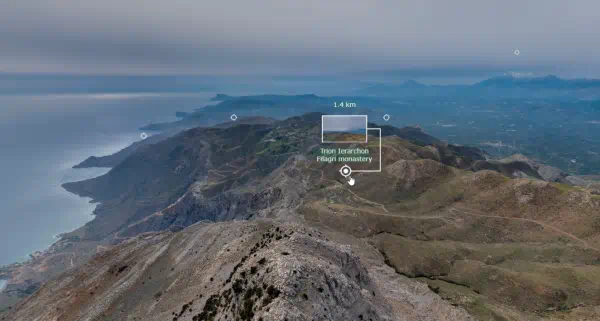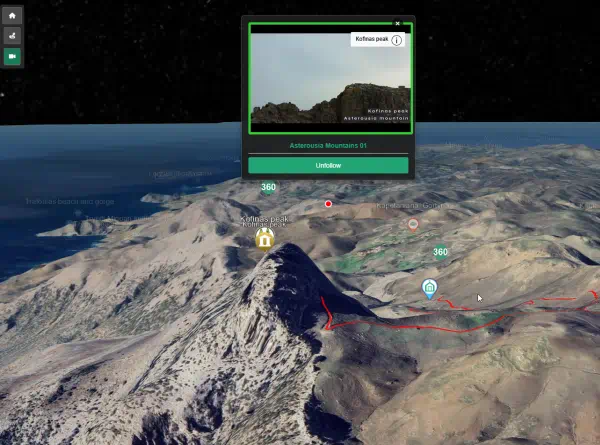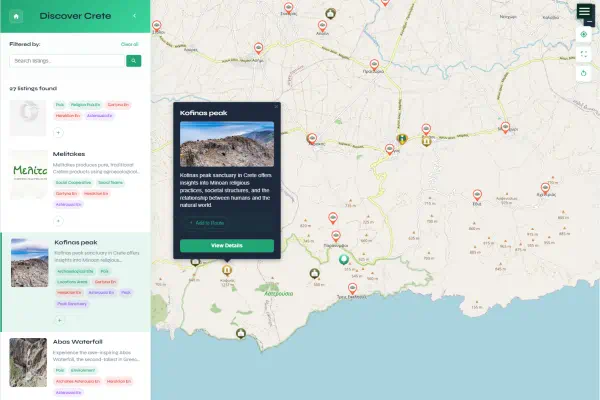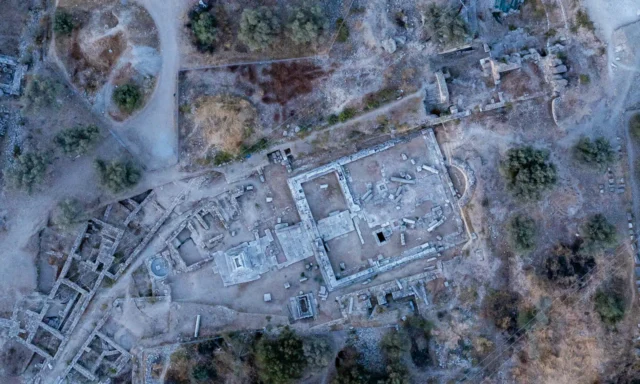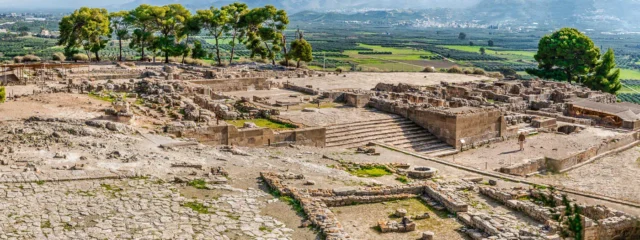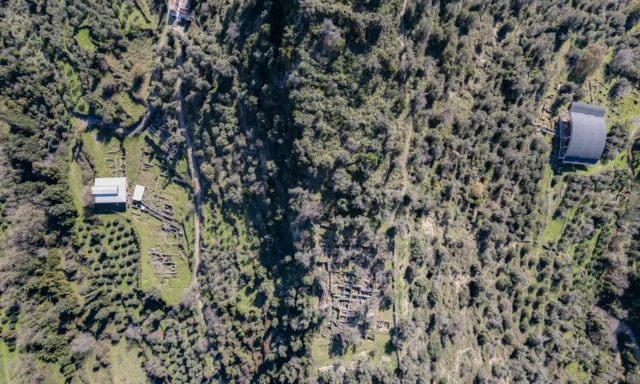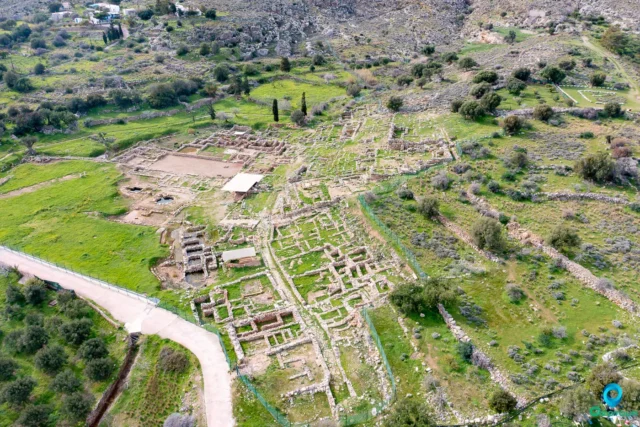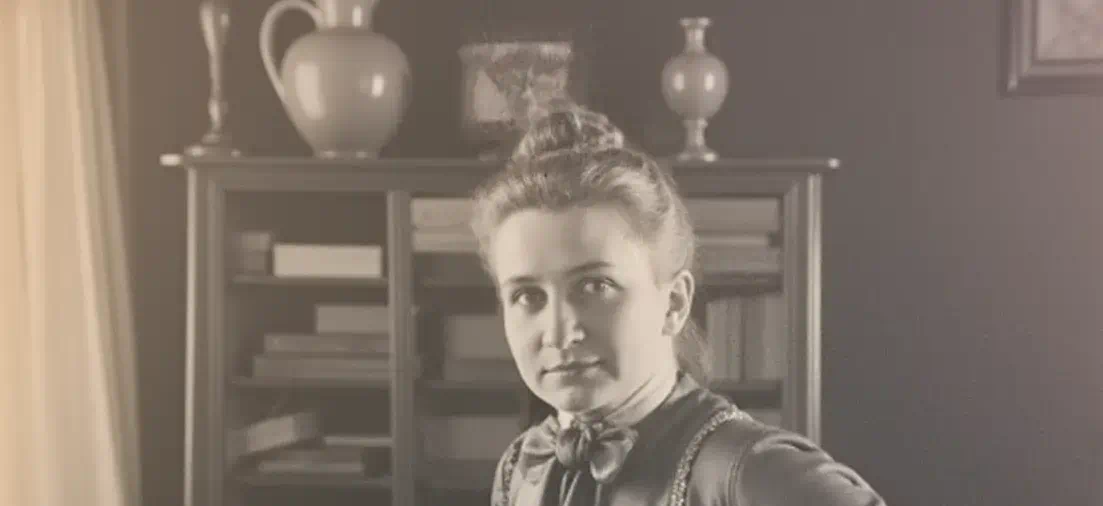Harriet Boyd Hawes
Biography of Harriet Boyd Hawes
Among the pioneering figures who illuminated the ancient past of Crete during the early twentieth century, Harriet Boyd Hawes (1871-1945) occupies a unique and significant position. She stands out not only for her substantial contributions to Minoan archaeology but also as a trailblazer who overcame considerable societal obstacles. In an era when archaeology, particularly field direction, was almost exclusively a male preserve, Harriet Boyd Hawes became the first woman to organize and direct major archaeological excavations in Greece. Her most celebrated achievement was the discovery and meticulous excavation of the Minoan town site of Gournia in East Crete, a find that provided unprecedented insights into the daily lives of ordinary Minoans. Situated within the “heroic age” of Cretan exploration, her work offered a crucial counterpoint to the initial focus on grand palatial centers, thereby broadening the understanding of the complexity and diversity of Bronze Age Cretan society. Her career demonstrates exceptional determination, scholarly rigor, and a capacity for leadership that challenged the conventions of her time.
From Classical Foundations to Cretan Fields
Harriet Boyd Hawes’s path to the dusty excavation trenches of Crete began with a traditional academic grounding in the humanities. She graduated from Smith College in 1892 with a degree in Classics, immersing herself in the languages and literature of ancient Greece and Rome. This classical education provided the intellectual foundation for her later archaeological pursuits. However, driven by a desire for a more tangible connection to the past than texts alone could offer, her interests shifted towards the material remains of antiquity. A pivotal opportunity arose with a fellowship at the American School of Classical Studies at Athens (ASCSA), placing her at the heart of the burgeoning archaeological activity in Greece.
Despite her qualifications and enthusiasm, securing permission to excavate on the Greek mainland proved difficult, likely due in part to prevailing attitudes towards women in fieldwork leadership roles. Undeterred, she turned her attention to Crete. The island, recently autonomous following centuries of Ottoman rule (as detailed in the Introduction of the main article), was opening up to foreign exploration and represented a promising, if less charted, territory for archaeological investigation. Arriving around the turn of the century, a time of intense excitement following early discoveries at Knossos and elsewhere, Boyd Hawes demonstrated remarkable resourcefulness and initiative. Her decision to pursue fieldwork in Crete, possibly necessitated by the obstacles faced elsewhere, ultimately led her to make discoveries that would secure her place in the annals of Aegean archaeology.
First Independent Command: The Kavousi Campaign (1900)
Displaying considerable resolve, Harriet Boyd Hawes undertook her first independent fieldwork campaign in the spring of 1900, focusing on the area near the village of Kavousi in the mountains of East Crete. This initial expedition, preceding her most famous discoveries, was significant in its own right. She successfully organized and managed the excavation, demonstrating her capabilities as a field director early in her career. Her team uncovered settlements and associated cemeteries at two main locations: Vronda and the Kastro. These sites yielded important evidence primarily dating to the Late Minoan IIIC period through the Early Archaic period, spanning the centuries following the decline of the Minoan palaces into the early Iron Age. During this campaign, she also conducted a test excavation at Azoria, a site later recognized as a major center of the Archaic period.
The choice to investigate these particular sites, whether by strategic design or the result of exploring available opportunities, proved archaeologically valuable. While major excavations by Arthur Evans at Knossos and the Italian mission at Phaistos were beginning to reveal the splendors of the Minoan palaces, Boyd Hawes’s work at Kavousi illuminated a different, less understood chapter of Cretan history: the turbulent “Dark Age” and the subsequent formation of early Greek communities on the island. The refuge settlements she explored, often perched on defensible hilltops like the Kastro, provided crucial data on settlement patterns, burial customs, and material culture during a period of significant social and political transition. This focus on post-Minoan Crete, distinct from the primary Bronze Age targets of other major expeditions at the time, demonstrated an early appreciation for the island’s long-term historical trajectory and yielded results that complemented, rather than merely duplicated, the emerging picture of Minoan civilization.
Gournia: Unveiling a Minoan Town (1901-1904)
Harriet Boyd Hawes’s most enduring contribution to Cretan archaeology resulted from her subsequent campaign. Following leads and her own explorations in the coastal plains of the Isthmus of Ierapetra, she identified the promising site of Gournia. Between 1901 and 1904, with crucial financial backing from the Philadelphia-based American Exploration Society and working under the auspices of the ASCSA, she directed the large-scale excavation of this remarkably well-preserved settlement. Leading a substantial workforce, she oversaw the systematic uncovering of what proved to be an entire Minoan town, occupied most intensively during the Middle Minoan III and Late Minoan I periods (roughly 1700-1450 BCE).
Gournia was a discovery of paramount importance. Unlike the vast palatial complexes at Knossos or Phaistos, Gournia presented a holistic view of a smaller, potentially industrial and administrative Minoan center. The excavations revealed a network of paved streets and alleyways connecting numerous houses, often two stories high, clustered around a central court. A more substantial building, dubbed a small “palace” or “governor’s house,” occupied a prominent position overlooking the court, suggesting a local administrative hierarchy. Crucially, the site yielded abundant evidence for daily life and craft production: tools for agriculture, fishing, and carpentry; pottery workshops; stone vase fragments; bronze implements; and domestic shrines.
The unearthing of Gournia fundamentally enriched the understanding of Minoan civilization. While Evans was reconstructing the seat of legendary kings at Knossos and the Italians were uncovering another major palace at Phaistos, Boyd Hawes revealed the fabric of Minoan society beyond the ruling elite. Gournia offered an unparalleled window into Minoan urbanism on a town scale, illuminating aspects of social organization, economic activity, and domestic existence that the larger palaces could only hint at. Her work provided essential data for reconstructing the lives of artisans, farmers, and local administrators, demonstrating that Minoan Crete was not solely defined by its monumental palaces but was a complex society with diverse settlement types and economic structures.
Context, Collaboration, and Rapid Dissemination
Harriet Boyd Hawes’s work was situated within a burgeoning American archaeological presence in East Crete, largely sponsored by or affiliated with the University of Pennsylvania Museum. This geographical concentration fostered a notable degree of interaction and collaboration among the American researchers active in the region during the early 1900s. Boyd Hawes’s Gournia project served as an initial training ground for Richard Berry Seager, who subsequently made significant discoveries at nearby sites like Vasiliki, the island of Mochlos with its rich Prepalatial tombs, the island settlement of Pseira, and the cemetery at Pacheia Ammos. Furthermore, Edith Hayward Hall (later Dohan), a fellow Smith College alumna and colleague at the ASCSA, assisted Boyd Hawes at Gournia before undertaking her own important excavations at the Sphoungaras cemetery and the dramatic post-Minoan refuge site of Vrokastro.
This cluster of American projects in the Isthmus of Ierapetra and Mirabello Bay regions suggests a dynamic network. The proximity of sites and shared institutional affiliations likely facilitated the exchange of knowledge, logistical support, and perhaps fostered a collective approach to understanding the regional archaeology of East Crete. This contrasts somewhat with the model observed at Knossos, where Sir Arthur Evans maintained a more singular interpretive authority, albeit reliant on skilled field direction from figures like Duncan Mackenzie. The American collaborative synergy may have contributed to the efficiency and rapid success achieved across several key sites in the region.
A defining characteristic of this American effort, spearheaded by Boyd Hawes, was the commitment to prompt and thorough publication. The results of the Gournia excavations, along with Seager’s work at Vasiliki and contributions from other specialists, were published in a comprehensive monograph: Gournia, Vasiliki and Other Prehistoric Sites on the Isthmus of Hierapetra (1908). Appearing only four years after the main fieldwork concluded, this publication stands as a landmark achievement. Its relative speed contrasts sharply with the much longer publication timelines for some other major Cretan excavations, such as Knossos, where Evans’s definitive multi-volume work, The Palace of Minos, appeared decades after the initial discoveries. The timely dissemination of the Gournia data made this crucial evidence for a Minoan town readily accessible to the international scholarly community, significantly accelerating the study of Minoan settlement patterns, social structure, and regional diversity, and ensuring that interpretations of Minoan civilization could quickly incorporate perspectives beyond the palatial centers.
A Life Woven with Scholarship, Service, and Partnership
Harriet Boyd Hawes’s life was not confined solely to the demands of archaeological excavation and scholarship. Her time in Crete also led to significant personal developments. In 1904 or 1905, she met Charles Henry Hawes (1867-1943), a British anthropologist visiting the Gournia excavations. They married in 1906, forming a personal and intellectual partnership. Together, they co-authored Crete, the forerunner of Greece (1909), a widely read book that synthesized the exciting archaeological discoveries on the island, including Harriet’s own work at Gournia, for a broader public audience, effectively communicating the significance of Minoan civilization.
Beyond her archaeological and collaborative scholarly work, Harriet Boyd Hawes dedicated substantial periods of her life to humanitarian service, particularly as a volunteer nurse during wartime. This commitment began even before her major Cretan campaigns, when she served during the Greco-Turkish War of 1897. She returned to nursing during the Balkan Wars (1912-1913), providing aid in challenging conditions. Her service continued through World War I, where she worked with Serbian soldiers and refugees in Corfu, and extended into World War II, during which she contributed to relief efforts at home in the United States. This remarkable record of service, spanning nearly five decades and multiple major conflicts, reveals a profound dedication to practical aid and human welfare. It suggests a character forged by both intellectual rigor and compassionate action, challenging any narrow definition of an academic life. Her direct engagement with the hardships and human costs of conflict in the Balkans and Greece may well have informed her perspective, perhaps deepening her interest in the lives and resilience of ordinary people, both past and present.
Enduring Legacy: Gournia, Gender Barriers, and Descendants
Harriet Boyd Hawes’s legacy is multifaceted and enduring. Archaeologically, her excavation of Gournia remains her most significant contribution. The site stands as the most complete example of a Minoan town uncovered during the pioneering era, providing indispensable evidence for Minoan urban planning, architecture, industry, religion, and daily life outside the palatial sphere. Her work fundamentally shaped the understanding of Minoan society’s complexity and regional variations, and Gournia continues to be a key reference point for studies of Aegean Bronze Age urbanism.
Equally important is her legacy as a pioneer for women in academia and fieldwork. By successfully leading major excavations and producing high-quality scholarly publications, she decisively broke gender barriers in a field resistant to female leadership. Her achievements served as an inspiration and paved the way for subsequent generations of women archaeologists. Following her intensive Cretan fieldwork, she held teaching positions, notably at Wellesley College, and remained engaged with archaeological and political affairs.
Her influence also extended directly into her own family. Reflecting a household where intellectual curiosity and engagement with the past were clearly valued, two of her children pursued careers related to her own passions: her son, Alexander Boyd Hawes, became an archaeologist and anthropologist, and her daughter, Mary Nesbit Hawes (later Allsebrook), became a Classical archaeologist. This familial continuation of archaeological pursuits underscores the profound personal impact of her groundbreaking life and work. Harriet Boyd Hawes is remembered not only for the Minoan town she brought to light but also for her courage in challenging conventions, her commitment to both scholarship and service, and the lasting inspiration she provided through her pioneering career.

